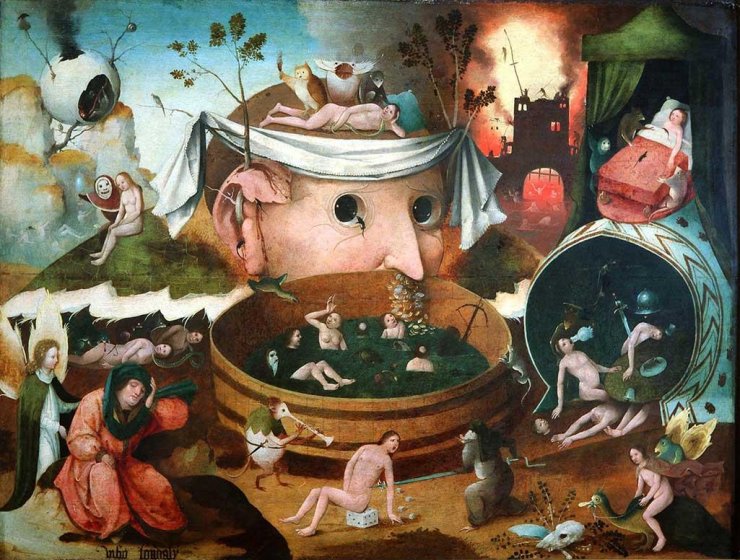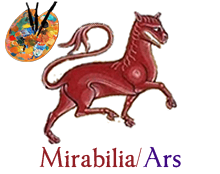
-Index-
Metaphors and symbols in Art History
José María SALVADOR GONZÁLEZ, Matheus Corassa da SILVA
Original title: Metáforas e símbolos na História da Arte
The enemy and the foreigner in Egyptian art: an iconographic study
Ana DIEZ FLÓREZ
Original title: El enemigo y el extranjero en el arte egipcio: un estudio iconográfico
In the following paper an aproximation to the concept of enemy in the Ancient Egypt is done: how and when it appeared, how it is identified and how it is representated in egytian art. Regarding the artistic representations, there are many in which egytian and foreigner enemies are shown being controlled and beaten by the pharaoh in various ways or defeated in battle. The foreigner, besides appearing deafeted shows an atitude of redemption and submision.
Cosmogonies and mythology of Ancient Egypt
Sofía ASTIZ
Original title: Cosmogonías y mitología del Antiguo Egipto
The evolution of the cult in Egypt was unstoppable. The gods of Ancient Egypt emerged and evolved in a dependent manner at territorial level, acquiring thus, greater importance as that space acquired it as well. They had a geographically limited power since they exercised it with those who were in their territory, so that the men and women who were living or simply passing through that place, should keep worship to that god in question to receive their protection and magic. In this article we will talk about the main gods of the main cities of Ancient Egypt mentioning, first of all, the most known cosmogony and from which the most important deities emerge.
Rembrandt, painter of the Old Testament scenes: Samson’s stories
Alejandro ELIZALDE GARCÍA
Original title: Rembrandt, pintor de escenas veterotestamentarias: historias de Sansón
The scientific investigations carried out during the last century aimed to address the influence that Calvinism, religion emerged during the sixteenth century as a response to the corrupt ecclesiastical institution, exercised in the various areas – social, economic and artistic – of the Republic of the Seven Provinces of the North. However, Calvinism does not help to fully understand the religious scenes produced by Hamerszoon Rijn van Rembrandt. This architect, formed in an environment of freedom of worship, halfway between the Reformed Church and the Christian Church, maintained throughout his life friendship with Jews, men of great culture and great weight in society. These relationships, along with their own life experiences, modulated their sacred scenes. Especially interesting is the analysis of the canvases painted during the 1930s and focusing on the figure of Samson, hero of the Old Testament. These compositions, milestones in the career of the painter, are still wrapped in a halo of mystery, especially with respect to his commission. In addition, these allow us to know the way in which Rembrandt composed his works, using either textual or visual sources close to his space and time or completely distant to him.
The childhood in the painting of Bartolomé Esteban Murillo
Laura PASCUAL PACHECO
Original title: La niñez en la pintura de Bartolomé Esteban Murillo
Murillo’s figure is one of the most important figures in the Spanish art scene of our time. He created themes using the image of children as indisputable protagonists of their canvases. These themes ranged from the best known biblical episodes, the angels, and as novelty, the poor children as protagonists and witnesses through the art of that social situation that was lived in this century. The cultural and social context of the artist influenced his creative activity and also the art representations of these themes in previous centuries. So through Murillo’s work we can see the painter’s interpretation of these themes and the artistic differentiation of these 17th century children in painting.
The medieval ruin in Caspar David Friedrich’s landscapes
Mar LLOPIS ORIVE
Original title: La ruina medieval en los paisajes de Caspar David Friedrich
Romanticism brings along the revaluation of medieval art, especially of Gothic architecture, until then denied and despised. From this will echo romantic paintings, in which the representation of medieval ruins will become commonplace. Friedrich (1774-1840) is the most paradigmatic artist of this particular context, and therefore, our study will focus on his work.
Reflections on the relation between Lilith and the femme fatale: the prostitution at the end of the 19th century
Marta MORUECO O’MULLONY
Original title: Reflexiones sobre la relación entre Lilith y la femme fatale: la prostitución a finales del siglo XIX
The study of the figure of Lilith must be set in two very specific moments: first, the Ancient Times, in which the Lilith myth arises; and the nineteenth century, as “reawakening” of this character. This research deals with the relationship between women and evil, and its iconography; The negative view of the feminine was propagated during the Middle Ages mostly due, in large part, to the discovery of the Aristotelian texts, laden with a strong misogynistic content. It will be precisely in the twelfth century when Lilith is adopted as part of the Hebrew imaginary, assuming the negative character of the woman, freeing Eve from the only and absolute responsibility of the Original Sin. This idea will be recovered during the nineteenth century reincarnated in the figure of the femme fatale and the pleasure from the demonic and the forbidden thoughts, coming to fetishize it, which has a direct relationship with the rise of prostitution, in whose artistic representations we can find the Lilith’s seed.


















































































